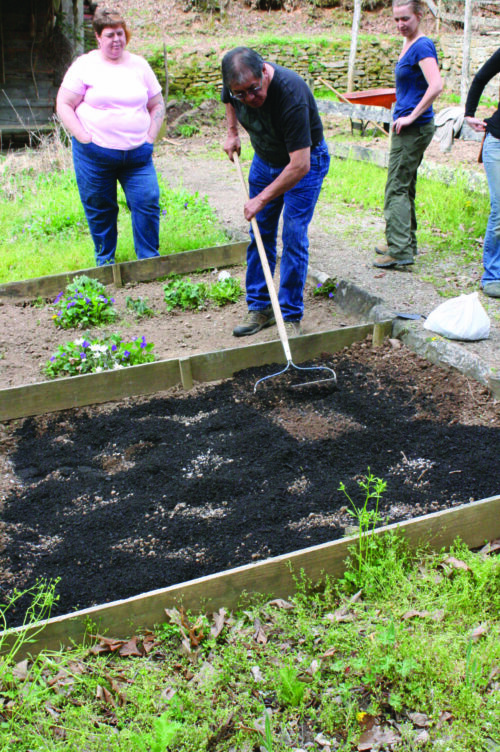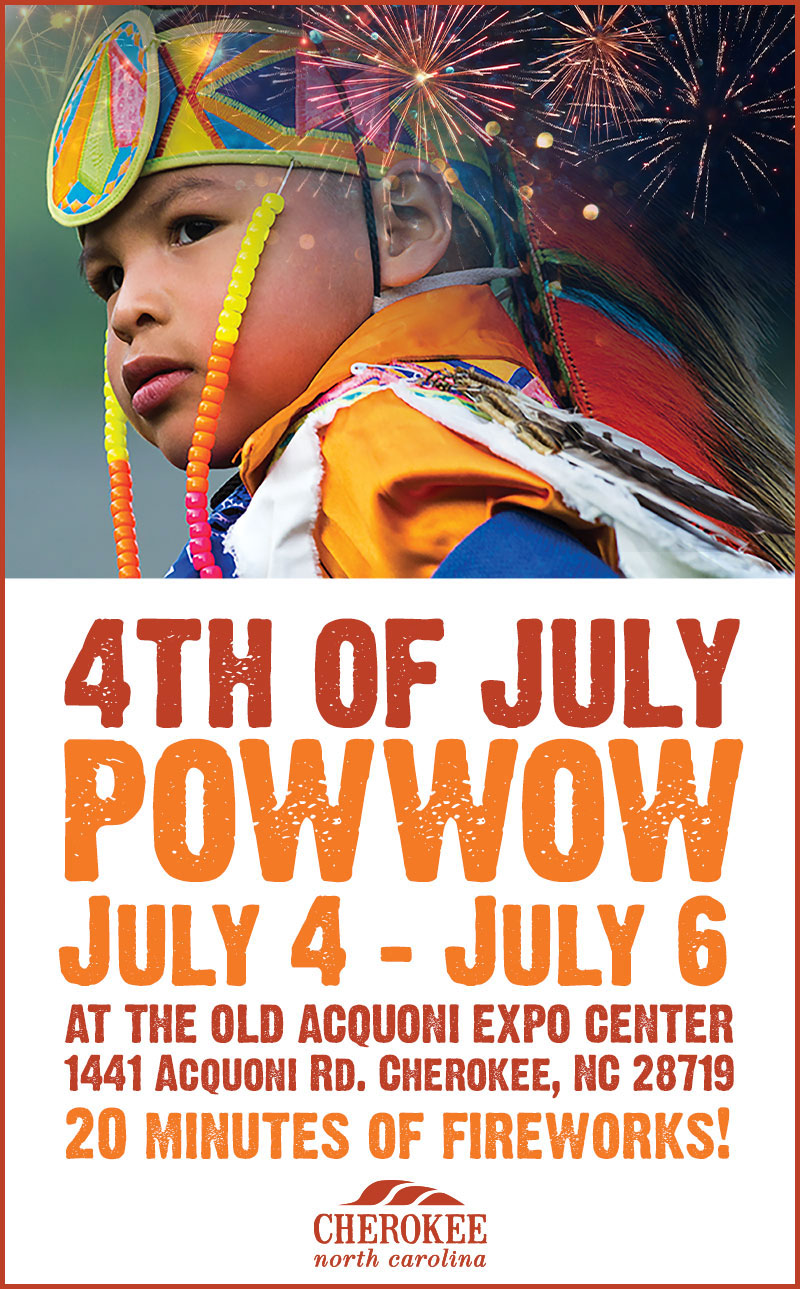By SCOTT MCKIE B.P.
One Feather Asst. Editor
CHEROKEE, N.C. – A grant will help re-establish bloodroot (Sanguinaria canadensis) plantings in various sites in Cherokee in a project that started a decade ago. The grant was awarded by the Cherokee Preservation Foundation (CPF) to Margaret Bloomquist, research scholar with NC Alternative Crops and Organics Program at N.C. State University, and Dr. Jeanine Davis, associate professor and extension specialist at N.C. State. According to CPF, the one-year grant for $19,786 is entitled “Empowering Artisans for Sustainable Dye Plant Production – Bloodroot”.
The goal is to have 600 square feet of bloodroot plots. Bloodroot is used by Cherokee basket makers to dye splints and also has several medicinal purposes.

In this photo from April 2013, Gil Jackson, then-Oconaluftee Indian Village manager, is shown preparing a bed for planting bloodroot as Dr. Jeanine Davis, pink shirt, associate professor and extension specialist at N.C. State University, and Allison Dressler, research assistant with the Mountain Horticultural Crops Research & Extension Center, look on. (DAWN ARNEACH/One Feather photo)
Dr. Davis said the grant will be a continuation of a 2012 project that established bloodroot test sites at several artists’ homes, the Oconaluftee Indian Village, and Cherokee High School.
“Over 10 years has gone by, and a lot of that knowledge has left and some of the support people that were in the area that people could call on for assistance, also retired or moved on and such,” she said. “So, we were asked again if we would consider putting a proposal in.”
“We’re going to work with three or four sites to put in demonstration gardens. We’re also going to establish two nurseries so that seed can be produced and more planting stock. And we’re, again, going to offer some educational programming to show people how to grow it.”
Dr. Davis said several new sites have already been selected including the New Kituwah Academy, Qualla Arts and Crafts Mutual, Inc., and Cherokee High School. “As a crafter myself, having your own materials nearby makes things a whole lot easier and gives you some confidence that it’s going to be there. With wild-harvested material, sites you’ve gone to for years and years and years could suddenly be gone.”
“We wanted some that are public so as many people as are interested can learn because it’s a plant that people love so much more than just for the dye. It’s just a beautiful Spring plant, too.”
Dr. Davis added, “Bloodroot was one of the plants, and this goes way back to the 1990s, where when a lot of these medicinal plants started becoming even more popular…even though this region has been known for collection of medicinal plants and sales for many, many, many generations, there was a huge surge. Various agencies and companies and organizations became concerned about some of these plants and bloodroot was on that list. So, I was asked and invited by various groups to start work on bloodroot and some other plants.”
She said bloodroot is an interesting plant. “Bloodroot likes to be in the woods, but it is pretty adaptable. So, you can grow it from just at the very edge of the woods where it gets a fair amount of sun, to where what you and I might call half-shaded. If it gets too dark, it will still grow but very, very slowly and you don’t get a lot of flowering on it. So, it’s one that you can take to the edge of the woods, and that’s where I often see people planting it. You want a site that’s got good soil that is going to stay moist, so we often don’t plant it where it’s going to get real dry…I tell people, too, to make sure it’s a site that you can access, that you’re going to go visit.”
“One of the things that I would like to investigate, once we’re down visiting with people again, is to see if any of the original sites still exist and what happened to them. If it was just a change in personnel…how do we maintain that? How do we make sure that somebody turns that over to someone else to keep an eye on it?”
The One Feather will have more on this story as it develops with bloodroot planting sites going up throughout the community.






